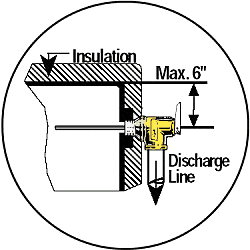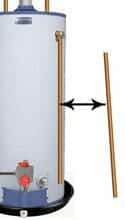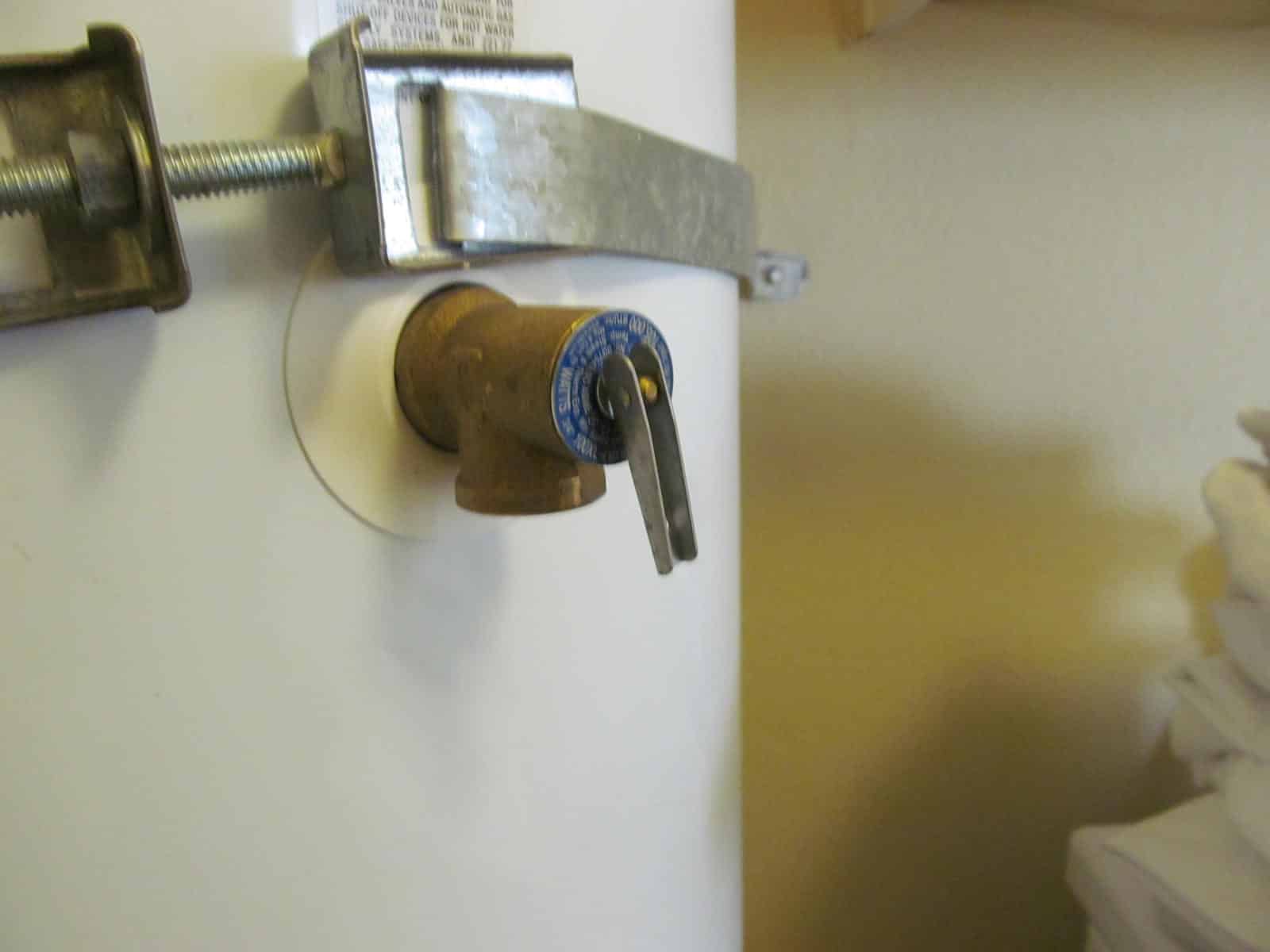T&P Valve and Discharge Line Safety Hazards


David Jones
Senior Contributor
David Jones is a seasoned home inspector and construction expert with over 20 years of experience. He specializes in structural integrity, foundation issues, and detailed home safety assessments.
View Full Profile →
What are T&P Valves?
T&P valves, or Temperature and Pressure Relief valves, are critical safety devices installed on water heaters. They are designed to automatically release water and steam if either the temperature or pressure within the tank exceeds safe limits. Typically, these valves are set to activate when the temperature surpasses 210 degrees Fahrenheit or the pressure exceeds 150 pounds per square inch (psi).
The Purpose of T&P Valves
The primary purpose of T&P valves is to prevent the possibility of the water heater tank exploding due to excessive temperature or pressure. Without this safety mechanism, the water heater can become a serious hazard. The valve acts as a failsafe, releasing hot water and steam to reduce the pressure inside the tank.

There are multiple sizes and types of T&P valves available so it is important to check the manufacturer’s instructions. The temperature sensing probe of the T&P valve must be positioned such that it can sense the hottest water of the tank. Purchasing the correct valve for your unit will ensure this is set correctly.
Risks of Missing or faulty T&P Valves
Believe it or not your water heater can actually explode like a rocket, shooting out through the roof. Don’t believe it? Check out this clip from MythBusters showing a water heater explode and shoot into the sky!
https://www.youtube.com/watch?v=rGWmONHipVo
Water expands when it gets hot, excessively high temperatures produce a buildup of gas inside the water heater and this combination with a faulty T&P valve can cause the water heater to effectively become a bomb. If this occurs and the water heater explodes, there is great risk for injury and damage. Depending where the water heater is located in the home, it could explode through walls into living rooms or bedrooms.
While a water heater rocket shooting through the roof is possible, it is very uncommon. Failsafe devices would have to not be present or be inoperable for such a catastrophe to occur.
A malfunctioning T&P valve, excessive pressure build-up, gas leak, improper installation, or lack of maintenance could cause major issues. Skin burns/scalding and house fires are two of the most common consequences of faulty water heaters.
Warning Signs of a Faulty T&P Valve
-
Constant Leaking or Dripping: If the T&P valve continuously leaks or drips water, even when the water heater is not heating, it might be faulty. A small amount of water expelled during heating cycles can be normal, but constant or excessive leakage is not.
-
No Water Discharge During Testing: Annually testing the T&P valve is recommended. This involves lifting the test lever and letting it snap back. If the valve is working, water should briefly flow out of the discharge tube and then stop when you release the lever. If no water comes out, the valve may be clogged or faulty.
-
Water Discharge Does Not Stop After Testing: If, after testing, the water continues to flow out of the discharge tube and doesn’t stop when you release the test lever, the valve may not be sealing properly and could be defective.
-
Signs of Corrosion or Rust: Visible corrosion or rust on the valve or at the discharge pipe’s connection points can indicate that there’s a leak or that the valve is old and may not function properly when needed.
-
Unusual Noises: If you hear noises coming from the T&P valve, especially when the water heater is heating up, it could be a sign that the valve is starting to fail.
-
Water is Too Hot: If the water coming out of taps is scalding and you haven’t set the thermostat to a high temperature, it could indicate that the T&P valve is not releasing excess pressure caused by overheating, which is a dangerous situation.
If you suspect that the T&P valve on your water heater is faulty, it’s important to address the issue promptly. A malfunctioning T&P valve poses a serious safety risk. It’s advisable to have a professional plumber inspect and, if necessary, replace the valve to ensure your water heating system is safe and operating correctly.
T&P Valve Discharge Line

The discharge line connected to the Temperature and Pressure relief valve on a water heater also plays a critical role in ensuring the safety and proper functioning of the water heating system. The discharge line directs the hot water and steam released from the T&P valve safely away to a drain or to the outdoors This prevents injury to people and damage to property.
Without a discharge line, the water expelled by the T&P valve would spill directly onto the floor or other surfaces near the water heater, potentially causing water damage, mold growth, and other related problems. By properly routing this discharge, you minimize the risk of injury, water damage and associated repair costs.
Risks associated with improperly installed or missing discharge lines:
-
Uncontrolled Discharge: If the T&P valve activates, the hot water and steam will be released directly from the valve without any controlled direction. This can lead to water damage in the area surrounding the water heater.
-
Risk of Scalding: The water discharged by the T&P valve is usually near boiling temperature. If someone is nearby when the valve releases this hot water without a discharge line, they could be severely scalded.
-
Water Damage: The uncontrolled release of water can lead to significant water damage, especially if the water heater is located inside the home, such as in a basement or utility closet. This can damage floors, walls, and personal property.
-
Mold and Mildew Growth: The excess moisture from the discharged water can create an ideal environment for mold and mildew growth, which can lead to health issues and further damage to the property.
-
Potential for Structural Damage: Continuous leakage or discharge without proper drainage can weaken structural elements over time, especially in cases where the water heater is located on upper floors.
-
Violation of Building Codes: In many areas, it is a requirement of building and safety codes to have a discharge line connected to the T&P valve. Not having one could be a violation of these codes, potentially leading to fines or issues when selling the property.
Discharge Line Routing

To mitigate the above risks, it is important to ensure that a discharge line is properly installed and maintained. This line should ideally terminate 6 inches above the ground or a drain, in a location that does not pose a risk to residents or the property. Regular inspections and maintenance of the T&P valve and its discharge line are also essential for the safety and compliance of a home’s water heating system. As always, check and follow local building and plumbing codes. These codes may have specific requirements regarding the routing, material, and termination of the T&P valve discharge line. Here are the general guidelines for running T&P discharge lines:
 T&P Valve missing discharge line
T&P Valve missing discharge line
-
Downward Slope: The discharge line should have a downward slope away from the valve to ensure gravity aids in the drainage of water. This prevents water from being trapped in the line, which could lead to corrosion or freezing in colder climates.
-
Material: The discharge pipe should be made of a material that can withstand high temperatures and pressure. Common materials include copper, CPVC, or galvanized steel. The material should also be consistent throughout the length of the pipe to avoid corrosion caused by mixed metals. PVC is not generally not an approved material. Additionally, the end of the line should not have threads on it.
-
No Obstructions: The line should not have any valves or obstructions that could block the flow of discharged water. This includes check valves, shutoff valves, traps, or any fittings that could restrict the flow.
-
Termination Point: The discharge line should terminate in a safe, visible location where the discharge can be easily seen. It should not be connected directly to a drainage system to prevent backflow contamination. The end of the line should be open to the air and typically should terminate at least 6 inches above the floor or ground level, but not more than 6 inches to prevent the possibility of scalding anyone nearby. It should not discharge horizontally and should have a 90 on the end of it, directing the line towards the ground.
-
Length and Size: The length of the discharge pipe should be as short as possible to reduce the chances of blockages or freezing. The diameter of the pipe should not be reduced from the outlet size of the T&P valve, and it is typically recommended to match the size of the valve’s outlet.
-
Indoor vs. Outdoor Discharge: If the discharge line runs to the outdoors, it should be protected against freezing temperatures to prevent blockage of the line. In colder climates, the discharge line is often run to an indoor drain, like a floor drain or utility sink, to prevent freezing. The discharge line should not drain into a crawlspace.
Homeowners can often install a discharge line themselves. If a professional is preferred, plumbers and qualified handymen can often do this work quickly and rather inexpensively. Parts are also readily available at big box home improvement stores.